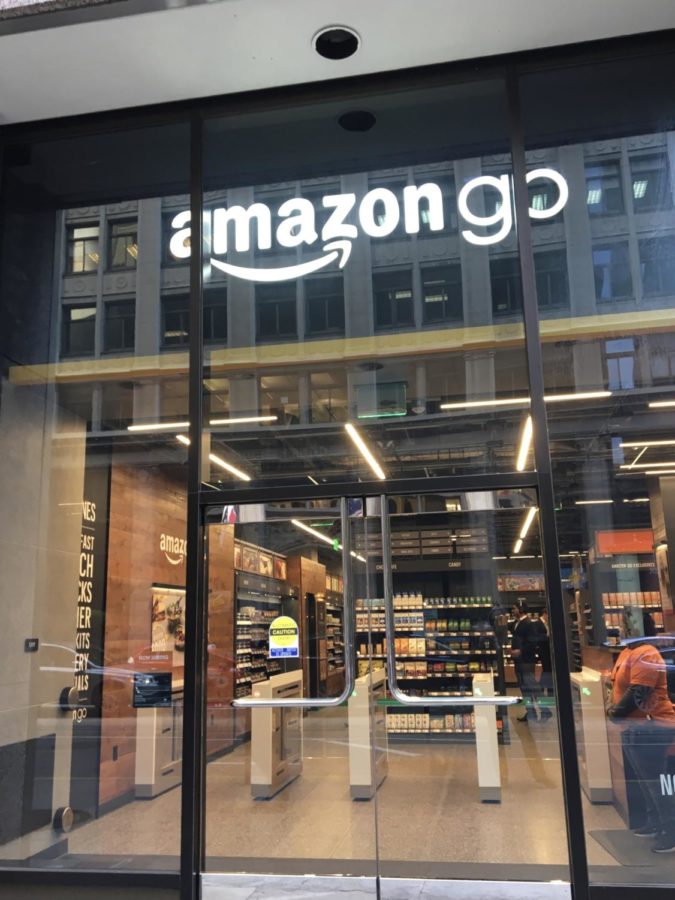No more cashiers: Amazon Go is changing the way we shop
Amazon Go store on 300 California St., San Francisco. By Lena Bianchi, Design Editor.
Most of the time, grabbing an item off the shelf of a grocery store and walking right out the door without checking out, is stealing. However, at Amazon Go, this is the only way to purchase items. Amazon Go is a different type of corner store-supermarket that allows their customers to enter by using an app, utilizing their phone as a virtual shopping cart, and then exiting the store without waiting in line to check out.
When a customer enters the store, they are required to scan a QR code from their phone, which is accessed by logging into their Amazon account on the Amazon Go app. Customers are allowed to bring guests as long as they are scanned in first and do not take items for whoever is purchasing. Once in the store, video cameras that cover the ceiling track the customer’s movement in the store. Amazon has only defined this tracking as “computer vision” and “deep learning algorithms,” in order to figure out precisely what each customer is grabbing. Lastly, the customer walks out the door, passing through the same sensors that they passed through when entering, and leaves without reaching for their wallet or any check out interaction.
Amazon Go opened its first location in Seattle on Dec 5, 2016, which was a beta version for store employees to see how the technology in the store functioned and how customers would respond, and later opened in early January 2017 to the public. Nine stores are currently open in the U.S. and running without any problems so far. Seattle is the location of Amazon’s headquarters and the first Amazon Go storefront. Seattle opened four fully functional Amazon Go stores and then spread to its first out-of-state location in Chicago. As of October 23rd, 2018, San Francisco is home to two of Amazon Go’s store locations: 300 California St and 98 Post St. Amazon’s strategic placing of this unique store is in the heart of downtown and financial district. With Amazon planning to open 3,000 stores by 2021, this cashier-less supermarket business model could ultimately impact how we interact with our daily shopping.
Amazon, a major e-commerce site, has expanded its market over the past two decades. Opening in 1995, Amazon started online selling books and slowly started adding other items such as movies, music, games, and electronics. Amazon has more recently expanded its role as a fast way to deliver desired goods, to include a video streaming site, a variety of reading devices, Amazon’s in-home virtual assistant called Alexa, a food delivery service, Prime Wardrobe, a discount day for Amazon Prime members called Prime Day, package pickup locations and recently, the purchase of Whole Foods.
Amazon’s expansion to their own storefront does not only mean a new type of making a profit for their company, but also an example of a new business model for other companies. People are left with the question: is anyone even working at the store and will it remove all store employees? Amazon Go has no need to employ cashiers and is taking this seemingly necessary job out of the shopping process. Even though computers and technology are replacing cashiers and removing the interaction with consumers, Amazon has other staff positions available. Amazon has team members to help customers outside of the store to download the app and explain this new model of the store, a cleaning staff that assures the customers have a clean shopping experience, and some team members who prepare ready-to-go meals that are made daily. These Amazon Go stores may signify a new way of shopping and may possibly be an indication of how the future of shopping will function.


